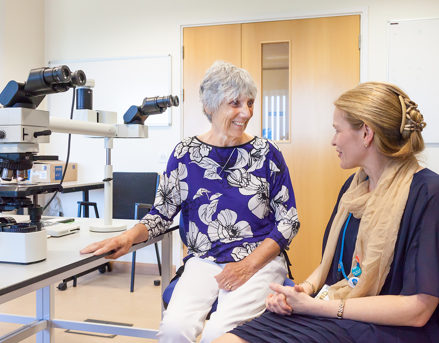Annual report 2018–2019
Our annual report 2018–2019 is an opportunity to reflect on the achievements and key successes of the College and our members over the past year.
The College recognises this wonderful contribution through its awards, which you can read about in this annual report. The patient case studies highlight the difference pathologists make to the lives of patients, whether it is diagnosing rare diseases or using their expertise to provide bereaved families with answers.
Download our annual report 2018-2019
Incredible stories
The stories included in our annual report give a unique view of the role of pathology in treating and diagnosing disease, featuring interviews with the patients themselves and the team involved in their care.
-
Dr Ted Fitzsimons: Living with genetic haemochromatosis
Genetic haemochromatosis is a common inherited disorder but few people know about it. This was certainly the case for Robin Galloway when he was diagnosed.
-
Dr Fiona Cooke: Managing endocarditis
Richard Himsworth had been well all his life but began experiencing problem after problem. Eventually he was rushed to the emergency department where it was discovered he was suffering from endocarditis – a serious infection of the heart lining.
-
Dr Monika Hofer: Identifying and treating nemaline myopathy
Allyson Taylor was desperate to find answers when she began experiencing muscle weakness that left her struggling to swallow. The answers came from two consultant neuropathologists.
-
Dr Mary Sheppard: how post mortems benefit the living
Identifying a cause of death in cases of sudden cardiac death not only helps families to understand why a loved one has passed away, it can also save lives.
-
Shefaa El Orman Oncology Hospital (SOH): diagnosing rare cancers
When Girgis Phot’s lymph node biopsy showed an unusual pathology, the team at SOH collaborated with colleagues in the UK to diagnose an extremely rare cancer.
-
Alex Civello: Crumble’s eye tumour
As a specialist in veterinary ocular pathology, Alex Civello sees eye cases from lots of different species. Here, he describes a case from a dog called Crumble.







